#Bronze Age city of Hala Sultan Tekke
Text
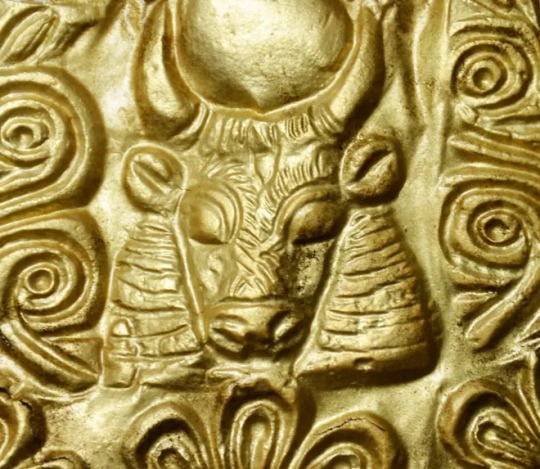
Tombs Rich in Artifacts Discovered in Cyprus
An archaeological expedition from Sweden's University of Gothenburg has uncovered tombs rich in artifacts and antiquities in Cyprus that makes the discovery among the richest ever found in the Mediterranean region.
Peter Fischer, the leader of the expedition and a professor of archaeology at the University of Gothenburg, said “considering the richness of the grave goods, it is a reasonable assumption that these were royal tombs, even though we do not know much about the form of government practiced in the city at the time."
Fischer believes that the artifacts, found just outside the Bronze Age trading city of Hala Sultan Tekke, indicate the tombs' occupants ruled the city, which was a center for copper trade between 1500–1300 BCE. The tombs, located outside the 50-hectare city, consist of underground chambers of varying sizes, accessed via a narrow passage from the surface.
Cyprus' Department of Antiquities, in an update posted to their website, noted: "The city’s wealth seems to have been based on the production of copper and trade with near and distant cultures. Judging by the rich burial gifts, the tombs belonged to families of the city’s ruling class who took part in the export of copper and intercultural trade."
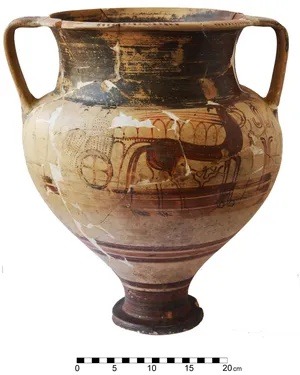
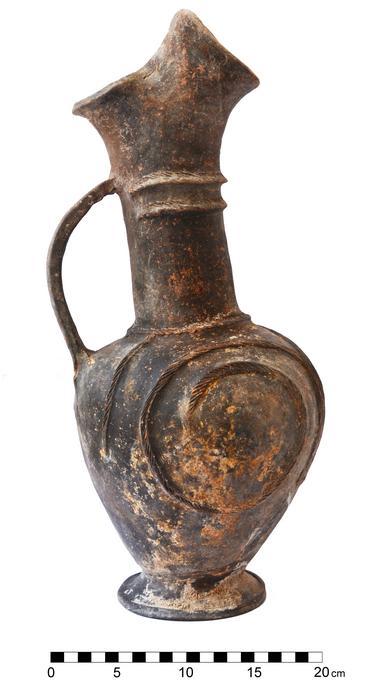
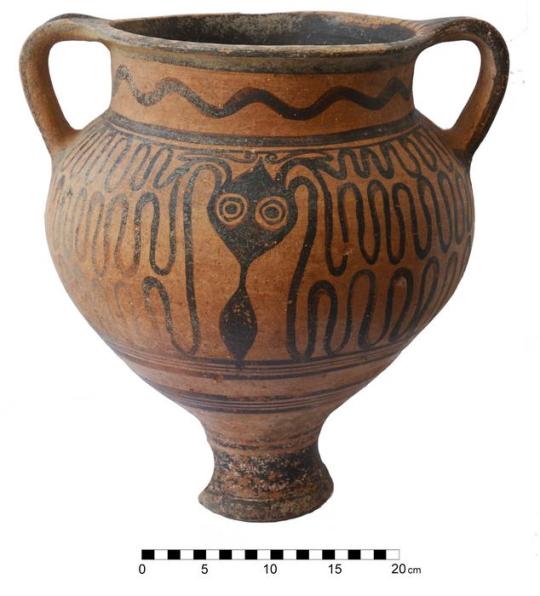
Unearthed artifacts include imports from Egypt, Baltic region
The Swedish Söderberg expedition has been carrying out excavations in Hala Sultan Tekke near the city of Larnaca on the south coast of Cyprus since 2010. Though the expedition has previously found chamber tombs with valuable grave goods, the latest discovery is unprecedented given the superb quality and quantity of artifacts.
“We found more than 500 complete artifacts distributed among two tombs. Many of the artifacts consist of precious metals, gems, ivory and high-quality ceramics," Fischer said.
About half of the artifacts unearthed during the expedition are believed to have been imported from different civilizations. For example, gold and ivory came from Egypt while precious stones, such as blue lapis lazuli, dark red carnelian and blue-green turquoise, were imported from Afghanistan, India and Sinai respectively. Amber objects from the Baltic region were also found among the artifacts.
The Department of Antiquities said that three chamber tombs, preliminarily dated to the 14th century BC, were exposed. While one of them had been looted, most likely in the 19th century AD, the other two were "undisturbed", apart from the collapse of their chambers.
Items recovered from those include locally produced pottery and ornaments and numerous items of jewelry such as diadems, which are ornamental headbands. Embossed images of bulls, gazelles, lions and flowers adorn the diadems. Bronze weapons, some inlaid with ivory, were also recovered as well as a gold-framed seal made of the hard mineral hematite with inscriptions of gods and rulers.
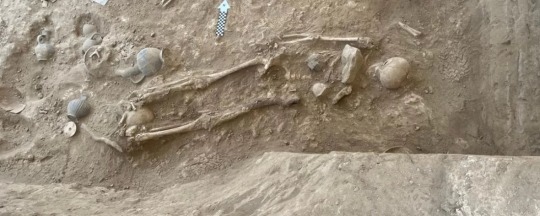
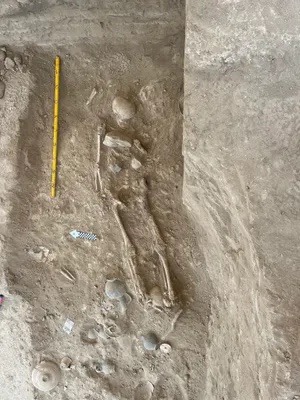
"Several items of ivory and faience are imports from Egypt during the famous 18th Dynasty, the time of the well-known pharaohs Thutmose III, Amenophis IV (Akhenaten) and his wife Nefertiti," said the department.
The excavation team used magnetometers, a type of instrument that can produce images showing objects and structures up to two meters beneath the surface, to carry out their expedition, according to the university.
Besides artifacts, the research team also unearthed several well-preserved skeletons in the tombs including one of a woman surrounded by dozens of ceramic vessels, jewelry and a round bronze mirror. A one-year-old child with a ceramic toy also lay beside her.
By Saman Shafiq.
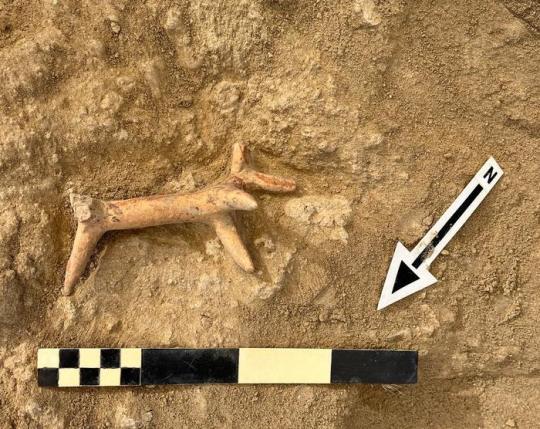
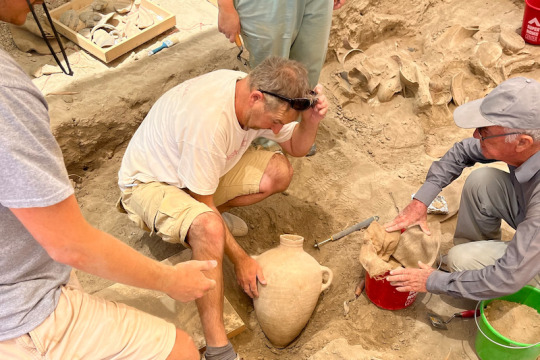
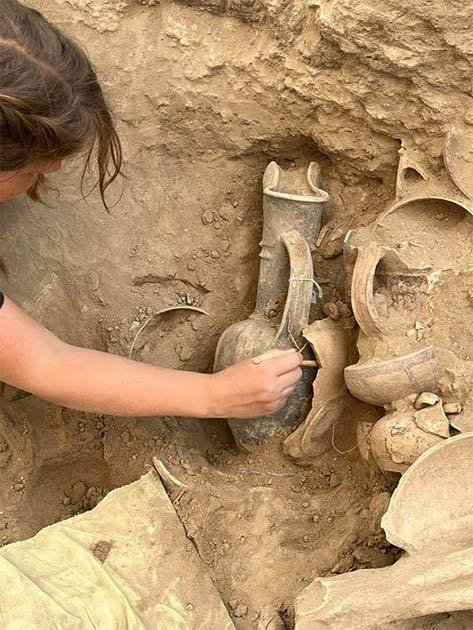
#Tombs Rich in Artifacts Discovered in Cyprus#Bronze Age city of Hala Sultan Tekke#ancient tomb#chamber tombs#ancient graves#ancient artifacts#archeology#archeolgst#history#history news#ancient history#ancient culture#ancient civilizations
40 notes
·
View notes
Text
Long distance trade during the Amarna Period with Cyprus. And lots of it. The movement of goods never ceases.
11 notes
·
View notes
Text
0 notes
Text
10 Best Place to Visit in Cyprus

1. Millomeris Waterfalls
Slipping from an elevation of 15 meters, the Millomeris Waterfalls are a few of the best in Cyprus. Saved in a forest ravine not definitely not the community of Pano Platres, the website is a peaceful oasis exquisite for visitors seeking to immerse themselves in a little bit of natural splendor. The falls are accessible by car and a tiny parking lot can be found, but guests can also arrive here by enjoying a leisurely 1 kilometers stroll from the Platres Chapel. There is absolutely no admission charge to go to the falls, and proper footwear is preferred as the region across the falls is quite steep and rocky.
2. Avakas Gorge
With limestone walls up to 30 meters high, Avakas Gorge is a 3-km-long natural question on the Akamas Peninsula. Around walking path with an amount of 7 km works through the gorge, offering visitors the opportunity to admire the wonderful rock and roll formations as well as the diverse nature. Visitors should remember that the hike is very difficult, particularly through the narrower elements of the gorge, and that the stones can be quite slippery when damp. Caution is preferred; the walk is most beneficial done in proper footwear, and hikers should be certain to bring lots of water.
3. Hala Sultan Tekke
Sometimes called the Mosque of Umm Haram, the Hala Sultan Tekke is an ancient Muslim organic that rests on the shores of the Larnaca Sodium Lake. The mosque was made in 648 A.D. at that moment where Prophet Mohammad's comparative Umm Haram died during an Arab raid. Today, the mosque is one of the main places of worship for folks of the Muslim trust, though it is available to everyone. There is absolutely no admission charge to see the site.
4. Kykkos Monastery
Perched at an elevation of just one 1,318 meters in the Troodos Mountains, the Kykkos Monastery is one of the very most opulent and easily recognizable monasteries in Cyprus. Though it was first founded in the 11th hundred years, almost all of its buildings are very new because the originals burned up down. The monastery is focused on the Virgin Mary, which is known to be home to 1 of three icons related to Luke the Evangelist. Gleam museum on the lands, and while access to the monastery is cost-free, anyone desperate to go to the museum must pay a tiny fee.
5. Amathus
Amathus dates completely back again to 1100 B.C., and it was one of the historical royal places of Cyprus until around 300 A.D. The town is currently a UNESCO World History Site, and its own impressive ruins can be found on the southern coast of Cyprus only 11 kilometers from the Limassol city center. The site continues to be undergoing excavation, but there are various areas available to visitors, like the market, the general public baths, and the fountain organic. There is a tiny admission payment, and visitors should allow at least 2 times to explore the ruins completely.
You may also interesting in Wedding limos Cyprus and Cheap taxis in Paphos are proudly provided, by your favorite transfer agency jackstaxicyprus.com
6. The Archaeological Museum in Limassol
Founded in 1948, the Archaeological Museum in Limassol was at first found in the Limassol Castle but has since been changed to a fresh building 2 kilometers away. The museum stores a big assortment of artifacts which were entirely on Cyprus which showcase the introduction of civilization from the Neolithic before the end of the overdue Roman period. You will discover three main exhibits: Among pottery, one of the coins and other steel items, and one of the sculptures, tombstones, and different other marble and rock artifacts.
7. Limassol Castle
Situated right in the center of the historical city, Limassol Castle is thought to have been formerly built-in 1193. However, the existing framework was rebuilt in the 19th hundred years under the guideline of the Turks. Highlights of the castle are the 2-m-thick walls and the special floor prison skin cells, that have been in productive use until 1950. However, the building is also home to the Cyprus Medieval Museum, which offers displays following the development of Cyprus between your 3rd hundred years and the 18th hundred years. An array of artifacts are shown, including middle ages pottery, coins, and different weapons.
8. Kolossi Castle
On the outskirts of Kolossi Community, Kolossi Castle is a past Crusader stronghold that placed an important proper position through the DARK AGES. The fortress is constructed of stone, and its own walls are 1.25 meters thick. The castle contains a three-story keep that is moved into by crossing more than a suspension bridge, and guests can explore the storage space room, the dining area, and two rooms thought to have been used for lodging. There exists large room that was used to make glucose from local sugarcane, while various tools used for sieging purposes are available on the top.
9. Limassol Zoo
As the major zoo in Cyprus, the Limassol Zoo houses about 300 animals and birds including tigers, panthers, zebras, ostriches, and falcons. The animals are split into sections according to their species. Gleam natural background museum, where visitors can easily see many taxidermized animals, birds, and seafood. The zoo is a fantastic destination for individuals; it regularly hosts special incidents for children, and it includes a specified children's play area with gadgets and a petting zoo. On Sundays, tourists may take a train drive through the playground and also have their picture considered with the zoo's ponies.
10. Cyprus Museum
Founded in 1882, the Cyprus Museum is the oldest archaeological museum on the island. It homes the greatest assortment of Cypriot antiquities found all over the world, and it's well worth noting that only artifacts that contain been entirely on Cyprus are viewed here. Displays are disseminated over 14 rooms set up chronologically and thematically, you start with a room focused on objects dating back again to the Neolithic and finishing with an area showcasing clay figurines that time from the first Bronze Era through the Roman period.
0 notes
Photo
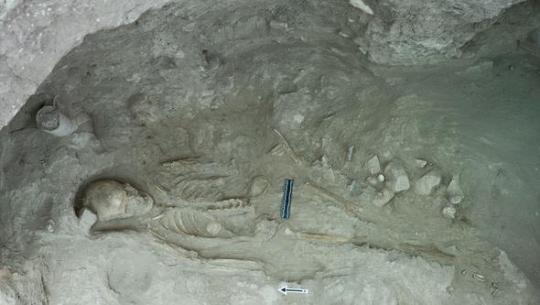




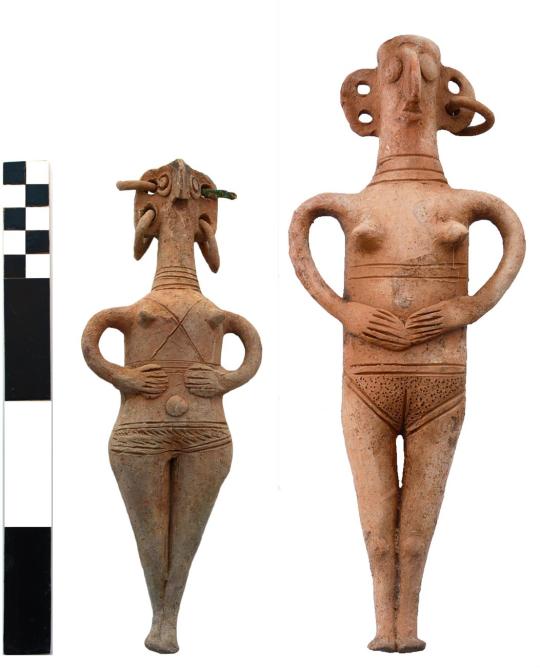
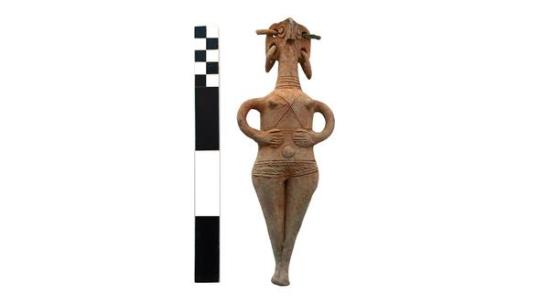

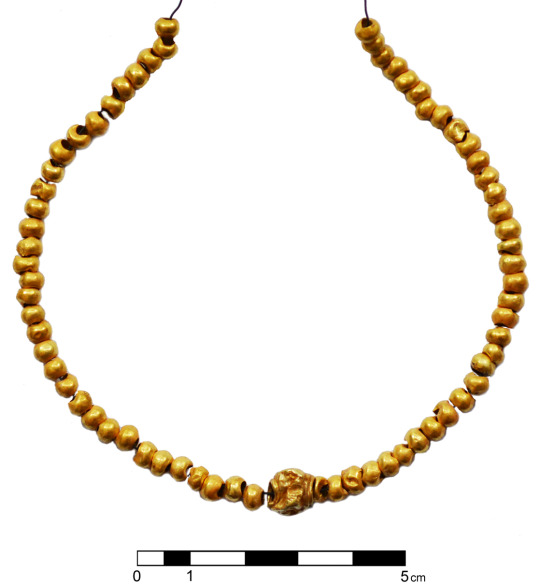
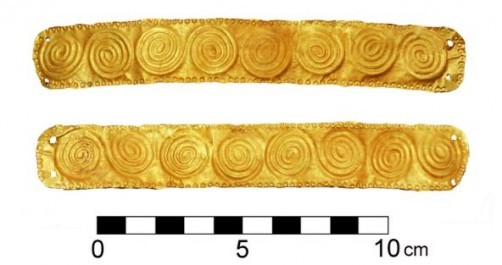
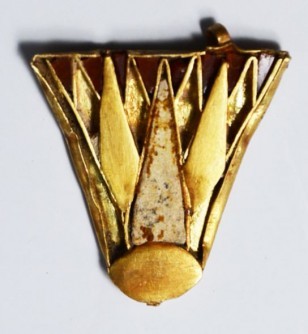

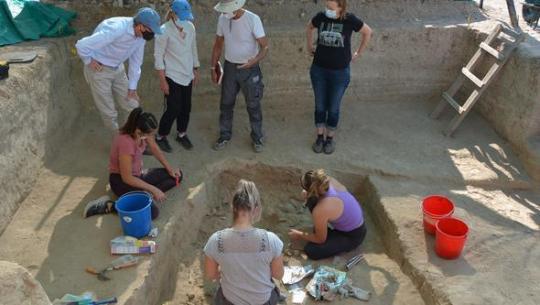
3,500-Year-Old Bronze Age Tombs Discovered in Cyprus
Archaeologists from the University of Gothenburg have concluded an excavation of two tombs in the Bronze Age city of Hala Sultan Tekke in Cyprus. The finds include over 150 human skeletons and close to 500 objects – including gold jewellery, gemstones and ceramics – from around 1350 BCE.
Newswise — Since 2010, the New Swedish Cyprus Expedition (The Söderberg Expedition) has had several rounds of excavations in Cyprus. In 2018, archaeologists discovered two tombs in the form of underground chambers, with a large number of human skeletons. Managing the finds required very delicate work over four years, since the bones were extremely fragile after more than 3,000 years in the salty soil.
In addition to the skeletons of 155 individuals, the team also found 500 objects. The skeletons and ritual funeral objects were in layers on top of each other, showing that the tombs were used for several generations.
“The finds indicate that these are family tombs for the ruling elite in the city. For example, we found the skeleton of a five-year-old with a gold necklace, gold earrings and a gold tiara. This was probably a child of a powerful and wealthy family,” says Professor Peter Fischer, the leader of the excavations.
The finds include jewellery and other objects made of gold, silver, bronze, ivory and gemstones and richly decorated vessels from many cultures.
“We also found a ceramic bull. The body of this hollow bull has two openings: one on the back to fill it with a liquid, likely wine, and one at the nose to drink from. Apparently, they had feasts in the chamber to honour their dead.”
A message thousands of years old
One particularly important find is a cylinder-shaped seal made from the mineral hematite, with a cuneiform inscription from Mesopotamia (present day Iraq), which the archaeologists were able to decipher.
“The text consists of three lines and mentions three names. One is Amurru, a god worshiped in Mesopotamia. The other two are historical kings, father and son, who we recently succeeded in tracking down in other texts on clay tablets from the same period, i.e., the 18th century BC. We are currently trying to determine why the seal ended up in Cyprus more than 1000 kilometres from where it was made.”
Among the finds are the red gemstone carnelian from India, the blue gemstone lapis lazuli from Afghanistan and amber from around the Baltic Sea, which shows that the city had a central role for trade during the Bronze Age. The gold jewellery, along with scarabs (beetle-shaped amulets with hieroglyphs) and the remains of fish imported from the Nile Valley, tell the story of intensive trade with Egypt.
Wide-ranging trading network
By comparing with similar finds from Egypt, the archaeologists were also able to date the jewellery.
“The comparisons show that most of the objects are from the time of Nefertiti and her husband Echnaton around 1350 BCE. Like a gold pendant we found: a lotus flower with inlaid gemstones. Nefertiti wore similar jewellery.”
The ceramic finds are also important.
“The way that the ceramics changed in appearance and material over time allows us to date them and study the connections these people had with the surrounding world. What fascinates me most is the wide-ranging network of contacts they had 3,400 years ago.”
The next step will be DNA analysis of the skeletons.
“This will reveal how the different individuals are related with each other and if there are immigrants from other cultures, which isn’t unlikely considering the vast trade networks,” says Peter Fischer.
By University of Gothenburg.
#3500-Year-Old Bronze Age Tombs Discovered in Cyprus#ancient tombs#ancient graves#ancient history#ancient civilizations#history news#history#archeology#skeletons#treasure#gold
13 notes
·
View notes
Text
0 notes